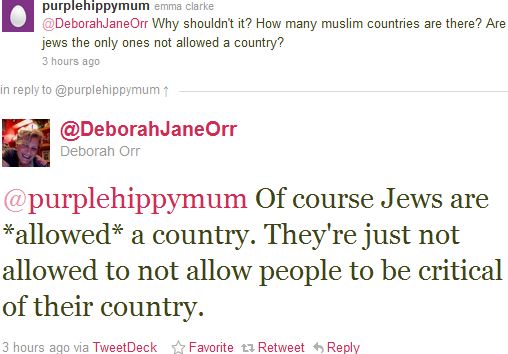1) Writing at Newsweek, Shany Mor discusses the current spate of violence through the prism of American foreign policy experts.
“The fundamental problem of the [Palestinian] election has nothing to do with Israel. It’s that a terrorist organization whose charter calls for genocide is actually quite popular in Palestinian politics and could be poised to bring to the West Bank the governance it has already brought to the Gaza Strip. And this was something the U.S. administration seemed to believe would just solve itself.
Until it didn’t. With the election first called and then cancelled, Hamas had to make a bid for its supremacy in Palestinian politics. Using the playbook that has suited Palestinian factions since at least 1928, it sought a “provocation” related to al Aqsa Mosque in Jerusalem as an excuse for violence, and then began lobbing rockets into Israeli cities. A grimly predictable escalation ensued with no sign of how or when it might end.”
2) At the Tablet magazine, Lee Smith looks at ‘Reporting in War Zones’.
“Here’s the thing: There’s nothing surprising about Western press organizations making arrangements with terror regimes. It happens all the time in the Middle East. CNN refrained from reporting on Saddam Hussein’s atrocities in Iraq in order to keep its office in Baghdad open. The New York Times famously led a tour group to the Islamic Republic of Iran.
This situation is even more overt and obvious in Gaza. The only reason a press outfit like the AP has to open a bureau there is to cover Hamas, but it’s never been interested in reporting on how the group stores missiles in homes, schools, and hospitals, or on how little of the money it receives from Tehran goes to building civilian infrastructure or responsible governance. That’s because the only story Hamas wants coming out of Gaza is about the fundamental evil of the Zionist entity. Through direct threats as well as fixers and minders appointed to steer journalists in the right direction, Hamas lets every press outfit and journalist in Gaza know that if they do not understand this fundamental angle, they are not welcome in Gaza. A reporter’s life may even depend on understanding those red lines.”
3) At the Jerusalem Post, Jonathan Schanzer and David May explain why Sheikh Jarrah is the latest ‘single point of failure’ fiction.
“Israel’s legal decision to evict Arab families from homes in the Sheikh Jarrah neighborhood of Jerusalem was the spark that led to the latest eruption of hostilities. This is the narrative that has been regurgitated hundreds of times since the current conflict began.
There’s one problem with that: It’s wrong. But this is certainly not the first time that the “single point of failure” narrative has been wielded to explain a campaign of organized Palestinian or Arab-Israeli violence.”
4) The Alma Research and Education Center asks Who is Trying to Raise the Tension on the Israeli-Lebanese Border?.
“The city of Tyre (that is close to the area from which the rockets were fired) is known for being home to a Palestinian population, especially the Rashidieh refugee camp, in which thousands of Palestinian residents reside. This camp is considered Hamas’s stronghold operating under Hezbollah’s patronage. Hamas established there an independent military infrastructure, with weapons development and manufacturing capabilities, among others. […]
There are two possibilities as to the perpetrators’ identity: the first is Palestinians identifying with Hamas. The second is Hezbollah. It should be noted that PLO (Palestinian Liberation Organization), which operates in Lebanon, denied all involvement with the incident.
We assess that the rockets were not fired directly by Hezbollah, however, at this time it is unclear whether Hezbollah knew about the rockets and the intent to fire them, and if it authorized it, as happened few times in the past.”
5) At the Ottowa Citizen, Terry Glavin explains why Real-world history also a victim of Israeli-Palestinian violence.
“It has become fashionable in certain media circles to cynically reconfigure the Israeli-Arab hostilities in faddish American “anti-racist” terms, with the Palestinians performing the function of oppressed “people of colour” and Israel relegated to the role of the racist white cop.
The popular elevation of “narrative” over real-world history and complexity, accelerated by the rise of social media disinformation, hasn’t helped matters. There’s an appealing tidiness in casting Israel as a racist European-settler apartheid state, but that “narrative” leaves out the fact that Israel’s Ashkenazi Jews, mostly refugees from the Holocaust, are still not a clear majority over Sephardic and Mizrahi Jews, most of whom were driven out of their ancient homes in the Arab World throughout North Africa and the Levant, and from Ethiopia and Iran. “People of colour,” in other words.”
6) The Algemeiner takes a look at Hamas’ finances.
“As the sole de facto authority of the Strip, Hamas squeezes tens of millions of dollars a year out of its subjects by various taxes, levies, and tariffs on consumer goods that enter the territory, as well as licensing fees on all manner of vehicles.
One major object of taxation is cigarettes, on which Hamas has placed a customs duty of up to 50%, which alone yields $10 million a month.
On average, Importers are further charged the equivalent of about $15 for every electronic device, $30 for every ton of fruits and vegetables, and up to $90 for importing toys.
In addition, every truck that drives on Salah AlDin Street — the major highway and transportation artery in the Strip — is taxed about $30.”




